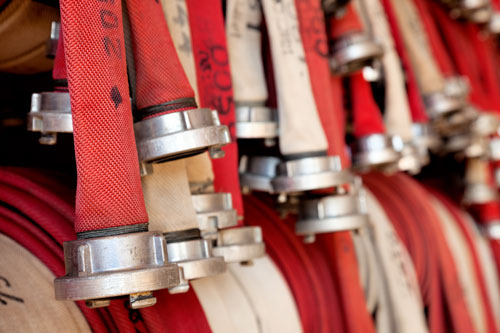Fire System Inspection Using Hydrostatic Fire Hose Testing
Hydrostatic testing of fire hoses is an important aspect of any fire system inspection and, using a hydrostatic test pump, it determines the fire hose’s serviceability and safety. Hydrostatic testing can be dangerous and should only be done by trained personnel using proper tools and procedures. General Fire and Safety of Lincoln performs fire hose testing at periodic intervals in order to determine how suitable a hose is for continued service.
What is a Hydrostatic Pump?
Hydrostatic test pumps are designed for pressure testing water systems. We use hydrostatic test pumps to ensure fire hoses are in good condition for service. It’s important to note that specialized training is required to safely utilize hydrostatic testing for fire hoses during a fire system inspection. General Fire and Safety has the staff with the expertise needed to safely administer fire hose pressure tests and hydrostatic fire hose testing in Lincoln.
The Process for Hydrostatic Tests
During fire hose testing, all air is removed from the hose. The hose is then filled with water and checked for efficiency, durability, and warping. The hose is inspected for bulges, sweating at couplings, hose movement in coupling tailpieces, and other visible deformities. You can depend on General Fire and Safety of Lincoln to perform hydrostatic testing of fire hoses in the safest, most accurate way. When testing a fire suppression system such as a fire hose, we are able to measure several different factors. The rise measures the height a hose will rise from the test surface while it is under pressure. The twist is the rotation of the free end of the hose while it is under pressure. We take a base reading and a second reading during the proof pressure test (anchor to proof pressure test lower down) and then find the difference between the two.
For an inspection of your facilities, schedule a free, no-obligation walk-through.

General Fire and Safety personnel perform these hydrostatic fire hose pressure tests in Lincoln:
- A proof pressure test applied to hose for a specific period of time in order to determine the maximum pressure that can be applied without changing the performance of the hose.
- A hold test determines whether weakness will develop under a given pressure for a specific period of time.
- A kink test measures the ability of a woven jacket hose to withstand brief pressure while the hose is bent back sharply on itself.
- A volumetric expansion test applies only to specific types of hoses, like hydraulic hoses or power steering hoses. This test measures volumetric expansion under ranges of internal pressure. Any hose that is deemed substandard will need to be repaired or replaced.


